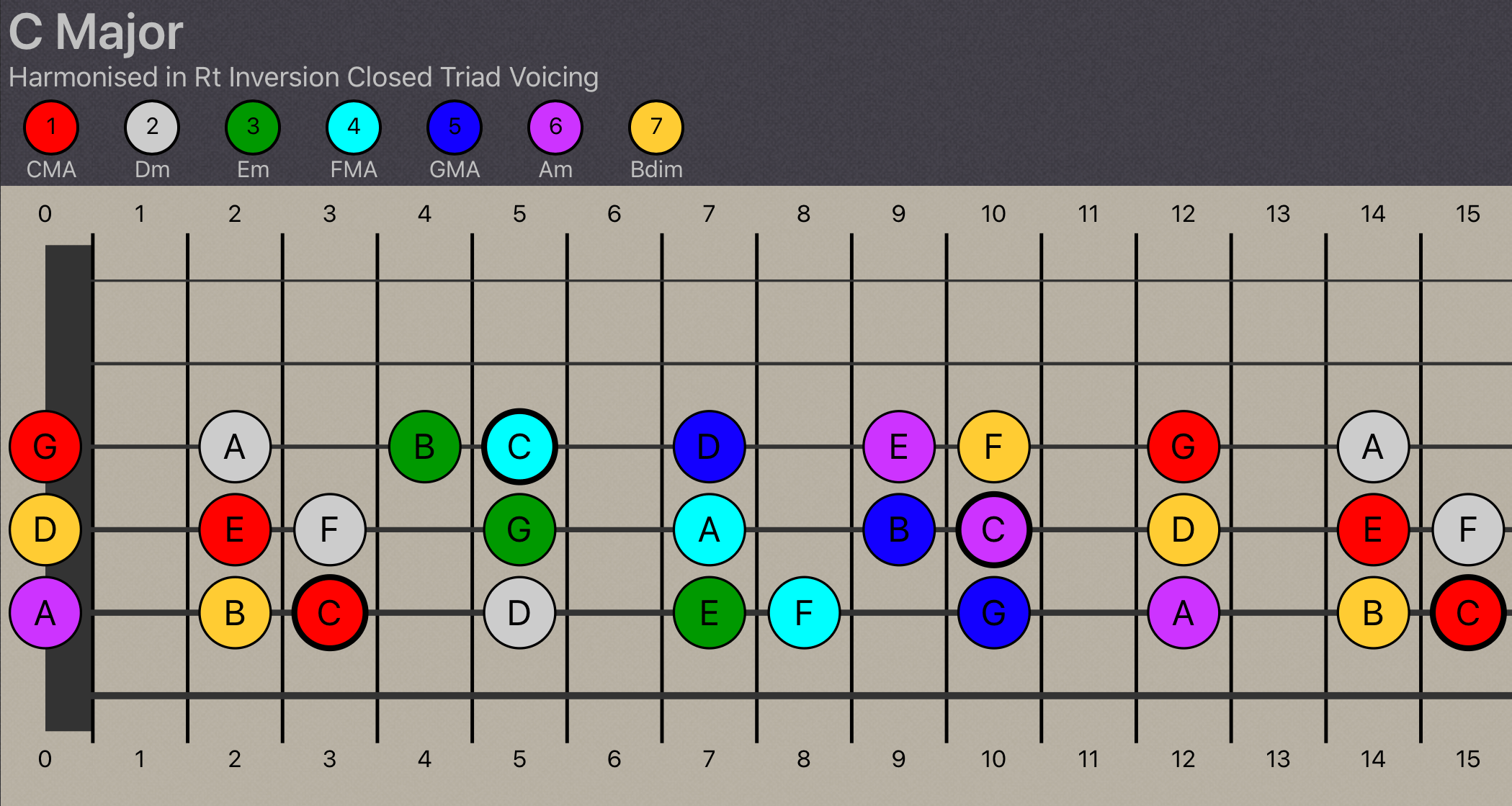Understanding how the diatonic major scale determines the color-coding of the chromatic scale is not a prerequisite to reading or using the diagrams for reference or harmonise features. It is a crude solution that makes it easy to change keys relatively effectively.

However, grouping the selected notes using color provides a visual harmonic reference alongside the physical! Enabling for the creation of diagrams that can illustrate a variety of harmonic concepts while also being able to survey the physical possibilities.

Harmony Presets
There are a variety of pre-sets to choose from that color code the fretboard diagram. The options available from the drop-down menus depend on the number of notes currently selected.
Many of the pre-set options are not using 7-note (heptatonic) diatonic scales. However, many presets derive out of tertian diatonic harmony.
The list below explains what color-coding options are available.
- Three-note chords harmonized in Closed and Open voicing.
- Four-note chords (tetrads). Five different types of voicing.
- Pentatonic scales harmonized into chords from a specific voicing and inversion.
- Hexatonic scales harmonized into a pair of triads and each inversion.
- Heptatonic scales harmonized into chords of a specific voicing and inversion.
- Octatonic scales harmonized into a pair of tetrads in a specific voicing and each inversion.
Custom Harmony
It’s also possible to manually customise the diagram. Clicking, holding and then dragging from one circle to another will cycle the currently selected colours. The letters that label what each string is tuned to can also be clicked to toggle a string.
The two arrow buttons are the bottom of the drawer underneath the legend Cycle Inversion enable the user to invert any custom settings quickly.
There are many ways of illustrating harmonization methods using color-coding than those in the pre-sets. Thought the presets are a great place to start.
Practice & Exercises
Within this guide there is no discussion of how to actually use the diagrams and this really depends on the individual and their personal ambitions, tastes, styles or technique.
Fretharmony as a colour-coding tool provides a platform for learning subjects like harmony and chords. However, it’s not limited purely to these subjects. It can also be used to learn fretting and finger positions of sequential single note arpeggios or scales with a variety of different fingering methods to choose from.
Conclusions
Thanks for taking the time to read this guide. It has explained the principles of how the diagrams are color-coded. Fretharmony aims to be more than a reference tool. It provides a pathway to discovering, understanding, and physically implementing new ideas. Hopefully, this guide has given a thorough enough explanation without being too dull. For more information head on over to the Blog and a Youtube channel for more detail and demonstrations of the how to apply these concepts to practice.





